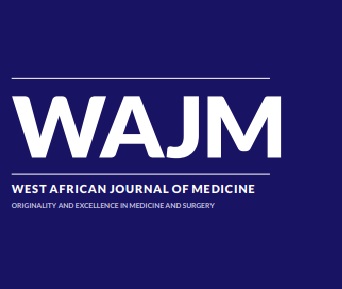ORIGINAL ARTICLES Pityriasis Rosea in Kaduna, North-West Nigeria: A 20-Year Experience
West Afr J Med . 2023 Jul 28;40(7):704-710.
Keywords:
Africans; Clinical presentation; Epidemiology; Kaduna – Nigeria; Pityriasis rosea.Abstract
Abstract in English, FrenchBackground: Pityriasis rosea (PR) is an acute, self-limiting papulosquamous skin disease which predominantly affects children and young adults. Pityriasis rosea appears to be more common in West Africa. Reports about PR from northern Nigeria are few.
Objectives: To present the relative prevalence, demographic and clinical characteristics of PR.
Methods: We conducted a retrospective review of records of consecutive patients attending two dermatology clinics in Kaduna, North-West Nigeria between September 2001 and November 2021.
Results: Of 39,037 patients, 922 (2.4%) presented with PR: Median age was 15 years (range 3 months to 63 years) and 24% < 10 years, 60% < 18 years, 87% < 30% years. 62% were female. In patients < 20 years, males were significantly more in number than females (69.6% vs. 60.9%, P = 0.007) while in those >20 years, females were more in number (39.1% vs. 30.4%, P = 0.007). The mean duration of disease at presentation was 14 days (range 1 - 240 days). Majority (60%) were seen during the rainy season. A herald patch was present in 67.8%, usually occurring 7 days before the main rash. The trunk was affected by the main rash in 94% while the neck and face were affected in 19.2% and 23.6%, respectively. Itching was reported by 80%. The classic disease constituted 80.2%. Oral involvement was rare.
Conclusion: Pityriasis rosea is a common disease in Kaduna. It mostly affects children, adolescents and young adults. Clinical presentation is typical in the majority of patients. Rarely an atypical disease occurs. Oral involvement was rare.
Keywords: Africans; Clinical presentation; Epidemiology; Kaduna – Nigeria; Pityriasis rosea.


